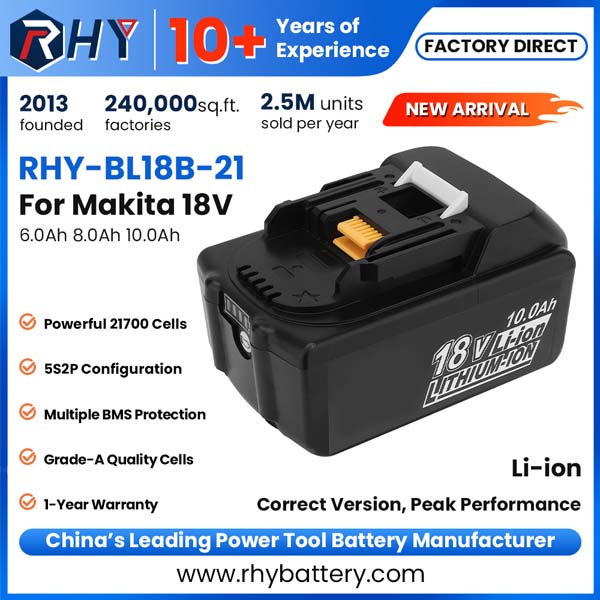
- Products
- Solutions
- Customization
- About
- Resources
- Contact
- Request A Quote
In today's digital age, lithium batteries have become an essential part of our lives, powering everything from our smartphones to electric vehicles. However, have you ever wondered how long these batteries will last and what factors affect their lifespan? In this article, we will explore the ins and outs of lithium battery life, providing you with valuable insights and tips to make the most of your battery-powered devices.
One complete charge cycle is the process of charging a rechargeable battery from empty to full and then discharging it from full to zero. This number of charge cycles is usually provided by manufacturers and represents the expected charging-and-discharging times. For example, a DNK 18650 2600mah battery cell might have a cycle life of 1000 times. In an ideal condition, it can undergo 1000 complete charging and discharging processes with its nominal capacity. But after 1000 cycles, the battery capacity will start to decrease. When it drops to 75% of its original capacity, you'll notice the battery isn't as durable, and you'll need to charge it more often. However, this doesn't mean the battery is completely useless. It can still be used, although with lower performance.

Now that we understand the concept of battery cycle life, let's move on to estimating the calendar life of a battery. This is an important aspect as it gives us a better idea of how long we can expect our battery to last in real-world usage.
We need to consider the cycle life and how often we use the battery. If a battery has a cycle life of 500 times, and we do a complete charging-and-discharging cycle every 5 days on average, we can calculate like this:
5 days * 500 = 2500 days. Dividing by 365, we get about 6.849 years. But remember, this is just an estimate. The actual lifespan depends on how we use the battery. For example, if we use the battery more frequently or in harsher conditions, the actual lifespan may be shorter.
There are several factors that affect the capacity attenuation of lithium batteries. The deposition of lithium ions, the decomposition of the electrolyte, the dissolution of the active substance, the phase transition of the electrode material, and the continuous growth of the solid electrolyte interface membrane (SEI) all play a role. Among them, the metamorphosis of the cathode material is a main cause. Unreasonable use, like overcharging and over-discharging, can also make things worse. High or low temperatures can impact the battery too. For lithium-ion batteries, the range from 0 to 40 ℃ is usually optimum. If we expose the battery to temperatures outside this range, it can lead to faster capacity degradation and a shorter overall lifespan.

Knowing how to estimate the battery's lifespan is useful, but it's equally important to know how to extend it. Here are some practical tips to help you get the most out of your lithium batteries.
Don't expose your device to extreme temperatures. Hot temperatures increase the internal pressure of the battery and reduce its activity. Cold temperatures decrease the discharge capacity. For instance, leaving your phone in a hot car or using it in extremely cold weather can have a negative impact on the battery's health.
Don't charge your battery when the energy level is very low. Keeping the battery at 20 - 80% of its capacity is a healthy state. This is similar to how we take care of our own health by maintaining a balanced diet. Overcharging or deeply discharging the battery too often can lead to faster capacity loss.
Don't leave the battery idle for a long time. During storage, batteries will discharge naturally, so we need to charge them periodically. If you have a spare battery that you don't use often, make sure to give it a charge every few months to keep it in good condition.
Prevent the battery pack from bumping and getting into deep water. Even though batteries are designed to withstand some level of physical stress, excessive impacts or exposure to water can damage the internal components and reduce its performance and lifespan.
In conclusion, understanding the lifespan of lithium batteries and taking proper care of them can help us get the most out of our batteries. By following these simple tips, we can ensure our devices are powered for a longer time, saving us money and hassle in the long run. At RHY, we are committed to providing high-quality battery solutions, and we hope this information helps you make the most of your lithium batteries.